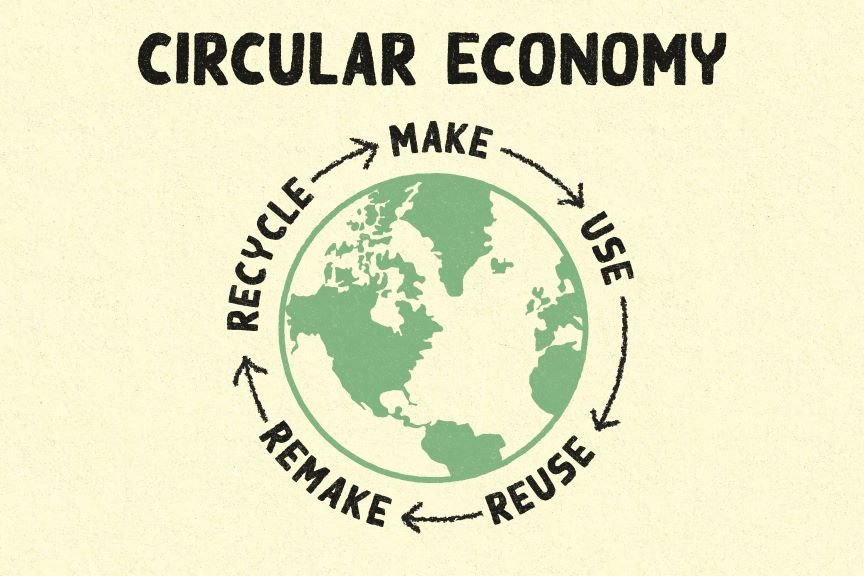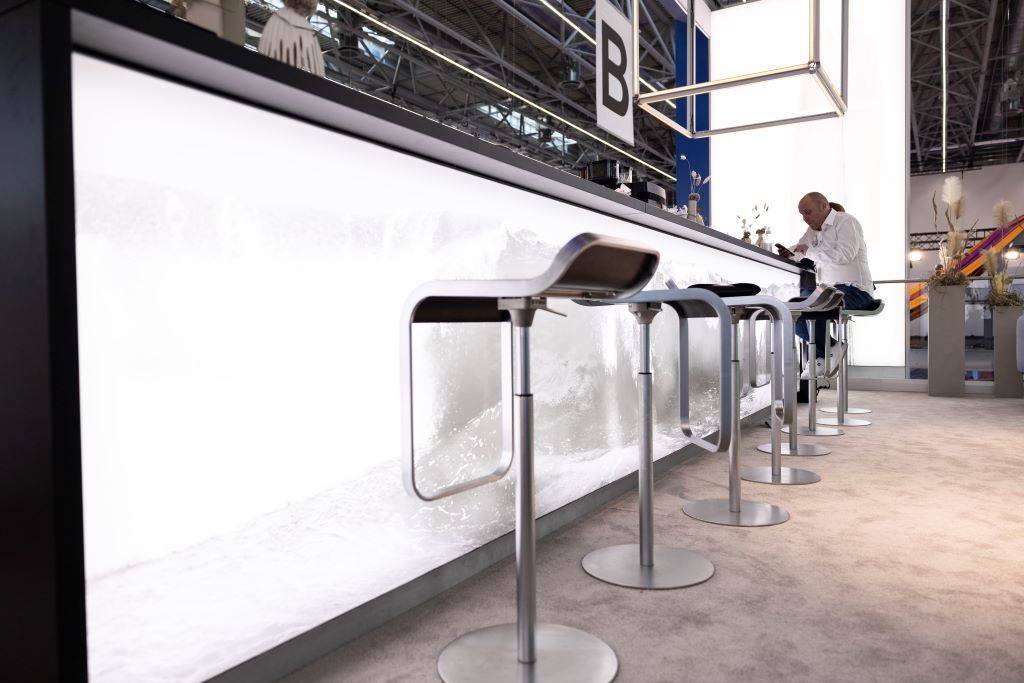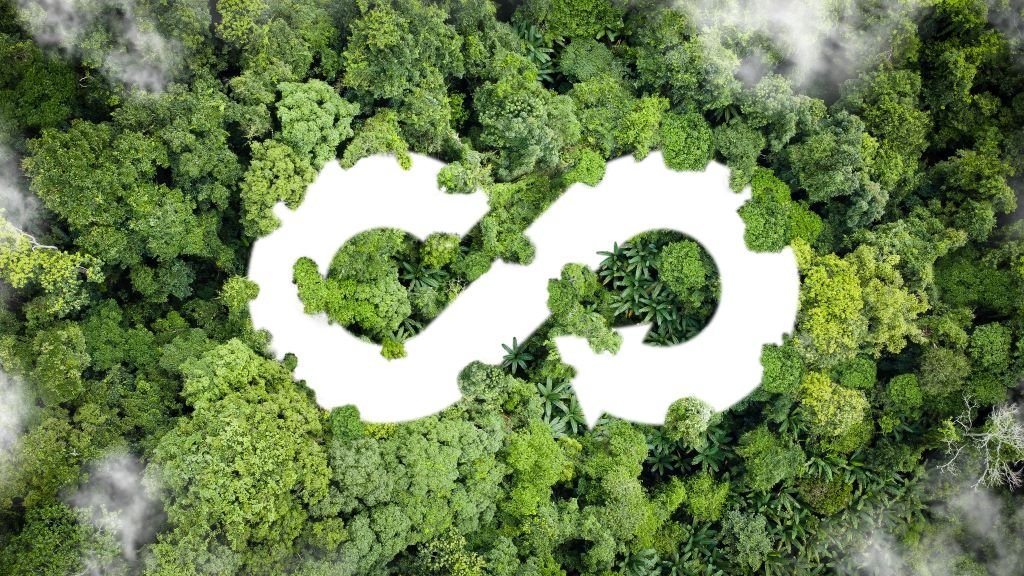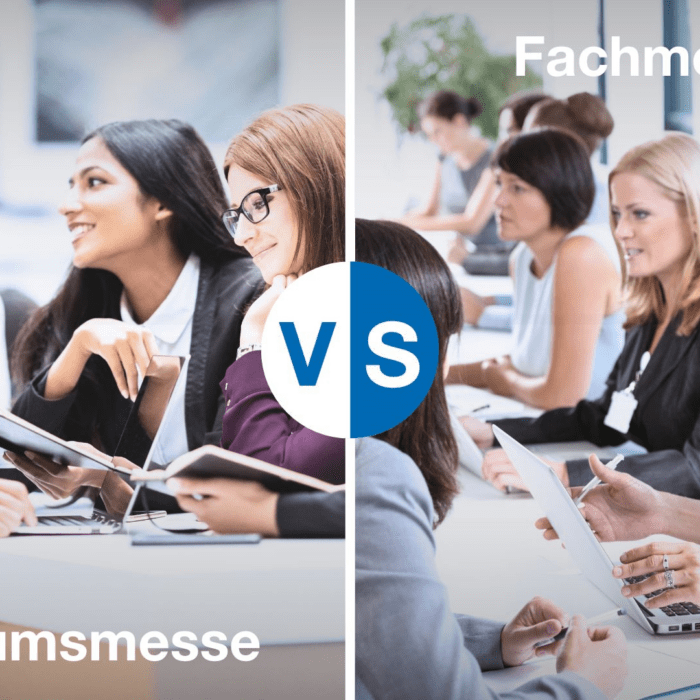The concept of the circular economy is one of the most important global trends of recent years and is inextricably linked to the quest for greater sustainability. But what exactly is meant by the “circular economy” and what significance does the new production model have for trade fair construction? We answer these and other questions in our article.
What is the circular economy all about?
Circular economy is an approach to resource utilization. It aims to reduce the amount of waste generated, on the one hand, and, on the other, to reuse seemingly “spent” products as a resource in a circular economy. Materials and resources thus do not end up in a landfill or incineration plant, but are fed back into the production process at the end of their life cycle.
Succinctly summarized, the idea of the circular economy pursues three goals:
- The reduction of the existing waste load
- The improvement of environmental protection
- Increasing resource efficiency (maintaining the value of the resource)
Implementing these principles on a global scale means a significant reduction in worldwide demand for raw materials – and thus a major step toward climate neutrality.


The difference from linear economy
The contrast to the circular economy is the traditional, “linear economy”: Here, products are first manufactured, then used and finally disposed of, often simply incinerated. The life cycle thus has a clear beginning and end and must, with each use, start again from zero. The circular economy emancipates itself from this concept and instead strives for a closed – and continuously ongoing – cycle. In this, the raw materials are recycled to generate new products. The main methods to achieve this goal are conservation of the resource (e.g. repair), reuse of products, upcycling or downcycling, and recycling.
Application of the circular economy in trade fair construction
The concept of using resources, materials and products more effectively is supported by three fundamental pillars or principles. In the following section, we briefly present these and give practical examples of how the circular economy can already be realized in exhibition stand construction today.
Reduce
The first principle of the circular economy is reduction. This concerns both the amount of waste produced and the resources used in the production process. For implementation, the complete product and material development of a company must be adapted so that the goods can have the necessary quality and service life.
Example in exhibition stand construction: Precise planning and creative stand design can ensure that exhibition stands take up only the space needed to fulfill their basic functions. The use of high-quality and more sustainable materials also helps to noticeably reduce the amount of resources required for stand construction – and reduce the burden on the environment.


Reuse
The second principle involves the maximum possible reuse of products and resources. Dies kann sowohl mittels Reparatur als auch durch Upcycling oder Refurbishing gewährleistet werden. By using these methods, existing products are returned to the use cycle and a longer service life is ensured.
Example in trade fair construction: Furniture and furnishings contribute extensively to the ambience of a trade fair stand – and can underline the sustainable orientation of an exhibitor. From using restored furniture pieces to using upcycled fishing nets as elegant carpeting, the options here for improving your environmental footprint are as numerous as they are appealing.
Recycle
Recycling materials is the third principle of the circular economy. In order to create new products, used objects are broken down into their individual components, or raw materials, after use and reprocessed. This approach reduces both the consumption of materials and the need for new raw materials.
Example in exhibition stand construction: The use of recyclable materials for an exhibition stand makes it possible that the resources used can later be used again in other stands. SYMA followed this principle at an early stage and relied on aluminum, which has a recycling rate of 90%, for its system profiles.
Conclusion – reduction through innovation
As has been shown, the circular economy encompasses all aspects of the production of goods and the use of resources. Its principles and goals are not short-term “trends”, but steps that are necessary in the long term and affect all sectors of the economy – including trade fair construction. To be able to implement these demands, far-reaching adjustments are required: From production & assembly to logistics & catering and waste management – all aspects must follow a holistic concept.
We are convinced that these changes are necessary and that reduction does not mean abandonment, but first and foremost innovation and a focus on the essentials. Through new ideas and optimism, we can achieve this goal as a society – and realize a system that is equally good for the environment, people and businesses.
Would you like to learn about the many options you have as an exhibitor to make your trade show presence more sustainable? Contact us – the SYMA expert team is looking forward to your inquiry.





